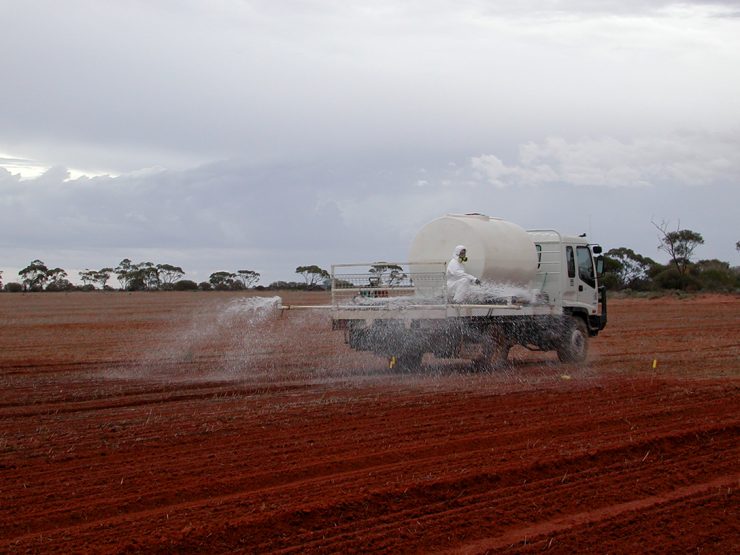Date
2021/10/29
Duration
4 min read
ebook
Soil Quality: 5 Soil Biology
Organisation
University of Western Australia
Authors
Theodore Evans
Research question: Do ants and termites affect crop yield; and by what specific mechanisms (tunnelling to create soil macropores, water infiltration and nutrition)?
Background
Soil type: Deep sand
Average annual rainfall: 284mm
Macropores associated with tunnelling macrofauna, such as earthworms, ants and termites, are considered a visual indicator of soil health. They improve water infiltration and gas diffusion, reduce evaporation and allow water to percolate deeper down the soil profile. In hotter, low rainfall dryland agricultural systems in Western Australia, where soil moisture is often constrained, earthworms are rare or absent; and instead termites and ants are prevalent.
Soil cultivation (tillage) and heavy machinery trafficking associated with cropping systems can destroy ant and termite nests and tunnels, which constrains water infiltration into soil via these preferred pathways. Reducing soil disturbance with no tillage allows soil macrofauna and their nests to survive in cropping paddocks. Confining heavy machinery to permanent wheel tracks in a controlled traffic farm system decreases soil compaction and increases organic matter retention. Thus, tunnels persist and food is available, enhancing macrofauna populations and therefore their ecosystem services.
This study was designed to measure the effect of ants and termites on grain yield, due to the effect of their tunnelling on soil porosity and moisture, and their effect on soil nutrients, on a farm with no tillage and controlled traffic. The study excluded ants and termites with liquid insecticides, and had water controls. Insect exclusion worked well, with active ant nests reduced by 85% and grass-eating termite activity reduced by 100% within six months of insecticide application. (Wood-eating termite activity was not affected by the exclusion treatment, likely because wood-eating termites are not exposed to the insecticide on the soil surface.) The study included a shallow tillage for weed removal treatment as well. Shallow tillage had no effect on the number of active ant nests or termite activity. The experiment ran over three years (2006–2008).
Key findings
Wheat yield responses varied to seasonal conditions. In 2006, after the insecticide exclusion treatment was applied, no yield response was evident between treatments. This is likely because the tunnels remained intact, thus there was similar rainwater infiltration in plots in all treatments. In 2008, following a fallow year, the yield response was 36% higher yield in control plots (i.e. those with ants and termites) compared with insect exclusion plots. This is likely because the tunnels had collapsed in the insect exclusion plots, reducing rainwater infiltration and soil moisture. This may have been especially important in 2008 due to the lower rainfall, demonstrated by higher levels of pinched grain. Soil nitrogen was likely important as well. Termites fix atmospheric nitrogen (similar to legumes), so plots without termites had lower soil nitrogen. There was no effect of shallow tillage for weed control on yield or pinched grain.
This study found that the presence of ants and termites is important in Western Australian low rainfall cropping systems, as they enable higher water infiltration and increase nitrogen availability, leading to higher productivity. Management practices that enhance soil organic matter availability and minimise the loss of species of soil macrofauna important to soil function would likely increase soil fertility and resilience. Long-term conservation agriculture practices such as no or low tillage and controlled traffic farming are important to maintaining soil porosity and resilience to compaction, with potential to maintain biological function through protection of insect tunnels and associated macrofauna.
References
ebook Soil Quality: 5 Soil Biology
Murphy D, Hoyle F, Collins S, Huberli D and Gleeson D (2021).
Journal article Ants and termites increase crop yield in a dry climate
Evans TA, Dawes TZ, Ward PR, Nathan L (2011). Nature Communications 2:262.




















